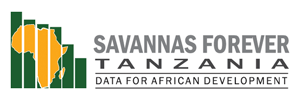Techniques
Interviewing Children
Savannas Forever Tanzania (SFTZ) does research in rural villages on variety of topics that involved interviews with parents and their children, such as a recent study on child labor issue. Children are a special vulnerable group so these projects require insightful design, proper approvals and appropriate interview techniques.
As for all projects with human subjects, Internal Review Board (IRB) approval is necessary before starting. SFTZ utilizes National Institute for Medical Research (NIMR) for this review.
A key part of these projects is obtaining permissions for the interviews. First, parents were asked for consent to be interviewed and for permission to interview their children. After parental permission is granted, the children were also asked if it is ok to talk to them. The process is standardized using written prescribed consent and permission language.
The actual interview protocols must be very flexible to allow for the children to be comfortable during the interview. Some children are naturally comfortable to talk to the interviewer without presence of parents, others feel unsecured and the interviewer encourages and notes the presence of parents/guardians. Our experience has shown that when talking about sensitive things, such as school attendance and work activities, children are more comfortable talking without the presence of their parents.
Questionnaires are kept short so that the children don’t get bored. Our objective is to keep the interview session to less than 15 minutes for children from age 10 to 12 years.
When we start a children’s focus group, we read the consent form and emphasize that they the all things discussed is anonymous. They are also free to leave at any time should they want to. We also utilize visual maps and diagrams to discuss issues. For example, we will post a sketch of a human body with eyes, nose, mouth, ears and neck for the children. We then encourage the children to draw a simple diagram of their body and work through their drawing to tell their story. We have also used a village map to let children draw and locate important institutions in the village such as schools, water sources, and firewood collection points. The use of images makes it easier for the children, gives them a chance to move around, and engages them in the discussion. We also do little exercises or sing a song to add variety and activity to the groups. The more we make our focus group children centered, the more comfortable they are to share information honestly with us.
Protecting anonymity of respondents
Health surveys often require researchers to collect sensitive data from respondents. A recent study conducted by Savannas Forever required that enumerators collect information about the sexual preferences and practices, family violence and spousal relations in rural villages in Tanzania. While conducting the interview in private protects the respondent from other family members becoming aware of responses, it still requires that the respondent and the enumerator discuss the topic openly. The use of electronic or paper instruments can aid in the anonymity, but are ineffective for the many illiterate respondents encountered in this research area.
To aid in these sensitive discussions, a set of laminated response cards were developed. On one side, pictures illustrate the options available to the respondent. On the other side and aligned with the options on the first side are the response codes used by the enumerator. A small pencil hole passes through the card. The 5 cards in the set have the responses in different positions such that all cards are unique. (See images).
For sensitive questions, the respondent is asked to select any card from the set. The enumerator asks the question and, holding the card between the respondent and the enumerator, asks the respondent to indicate the correct response with a pencil by putting it into the hole. The enumerator sees the pencil point on their side of the card and records the response code. The interpretation of the response codes is unavailable to the enumerator. As all responses are collected on a PDA or similar electronic device, the program logic indicates disallowed responses. The respondent can change cards at any time, further enhancing the sense of anonymity.
When used for a recent set of over 500 interviews, the cards were simple to explain and use by the respondents. Training of enumerators was also simple. Enumerators report that the respondent appeared more comfortable in providing responses than compared to earlier projects that asked the questions directly.

